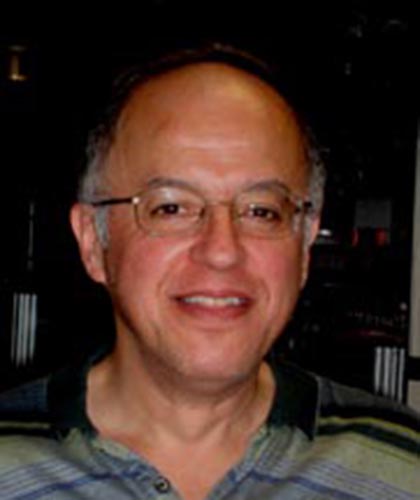
Bernal, Santiago
EDUCATION
- Ph.D., Physics, University of Maryland College Park, 1999
- M.S., Physics, Georgia Institute of Technology, 1983
- B.S., Physics, National University of Colombia, 1981
BACKGROUND
Dr. Santiago Bernal worked for his Ph.D. under the direction of the late Prof. Martin Reiser. Before his graduate studies at the University of Maryland, Bernal taught college physics and mathematics in Colombia and Puerto Rico. Bernal joined the University of Maryland Electron Ring (UMER)* group in 2000 as a postdoctoral research associate, later becoming a research scientist at the Institute for Research in Electronics and Applied Physics (IREAP). He was involved in the design and construction of UMER and has been a leading experimentalist in the project. Bernal helped organize and conduct an experimental course in UMER for the 2008 U.S. Particle Accelerator School. In addition to beam and accelerator physics, Bernal is interested in statistical mechanics and the educational aspects of physics.
* The UMER Group was renamed the Bright Beams Collective Research Group (BBC) in 2021.
- Beam and accelerator physics
- All aspects of experimental physics of intense charged particles beams (instrumentation, diagnostics, computer simulations)
- Thermodynamics
- Statistical mechanics
- Educational aspects of physics
RECENT PAPERS:
- S. Bernal, B. Beaudoin, H. Baumgartner, et al., "Ultra-Low Current Beams in UMER to Model Space-Charge Effects in High-Energy Proton and Ion Machines," AAC16, National Harbor, MD, Aug. 3, 2016.
- S. Bernal, B. Beaudoin, L. Dovlatyan, S. Ehrenstein, I. Haber, R. A. Kishek, E. Montgomery, and D. Sutter, "Low Space-Charge Intensity Beams in UMER via Collimation and Solenoid Focusing", Cornell University Library, Oct. 2018; arXiv:1810.04264.
- L. Dovlatyan, B. L. Beaudoin, S. Bernal, I. Haber, D. Sutter, and T. M. Antonsen, Jr., Optimization of Flat to Round Transformers with Self-Fields Using Adjoint Techniques," Phys. Rev. Accel. Beams 25, 044002, Apr. 6, 2022; doi: https://doi.org/10.1103/PhysRevAccelBeams.25.044002.
Books:
 Small Particle Ring Accelerators and Paul Traps: Case Studies and Prospects by Santiago Bernal (University of Maryland), (The Institute of Physics (IOP) Publishing Ltd, 2023); doi: 10.1088/978-0-7503-4891-1.
Small Particle Ring Accelerators and Paul Traps: Case Studies and Prospects by Santiago Bernal (University of Maryland), (The Institute of Physics (IOP) Publishing Ltd, 2023); doi: 10.1088/978-0-7503-4891-1.
This reference text covers the description, theory and history of room-sized or smaller ring accelerators and Paul traps. The book describes the physics of five distinct small ring accelerators, or related devices, as case studies of scaled experiments to illustrate diverse accelerator and beam physics principles with potential applications to advanced larger machines: 1) small electron storage ring at University of Maryland (UMER); 2) larger electron/proton ring at Fermilab (IOTA); 3) compact ion ring accelerator (SiR); 4) model fixed-field alternating gradient machine (a cyclotron/synchrotron-like device) that operated in the UK (EMMA); and 5) Paul traps as RF (radio-frequency) very compact simulators of accelerators (PTSX, S-POD and iBEX). The appendix summarizes basic scaling laws applicable to ring accelerators. It also includes a brief description of computer resources and examples for modelling accelerators.
- Chapter 1: Space Charge and Other Physics at the University of Maryland Electron Ring (UMER)
- Chapter 2: Space Charge in the Isochronous Regime at the Small Isochronous Ring (SIR)
- Chapter 3: Nonlinear Optics and Other Physics at the Integrable Optics Test Accelerator (IOTA)
- Chapter 4: Fixed-Field Alternating Gradient (FFAG) Accelerators and the Electron Model for Many Applications (EMMA)
- Chapter 5: Betatron Resonances and Space Charge: Paul Traps as Model Accelerators
- Appendix A: Physics Scaling of Particle Ring Accelerators
- Appendix B: Computer Codes
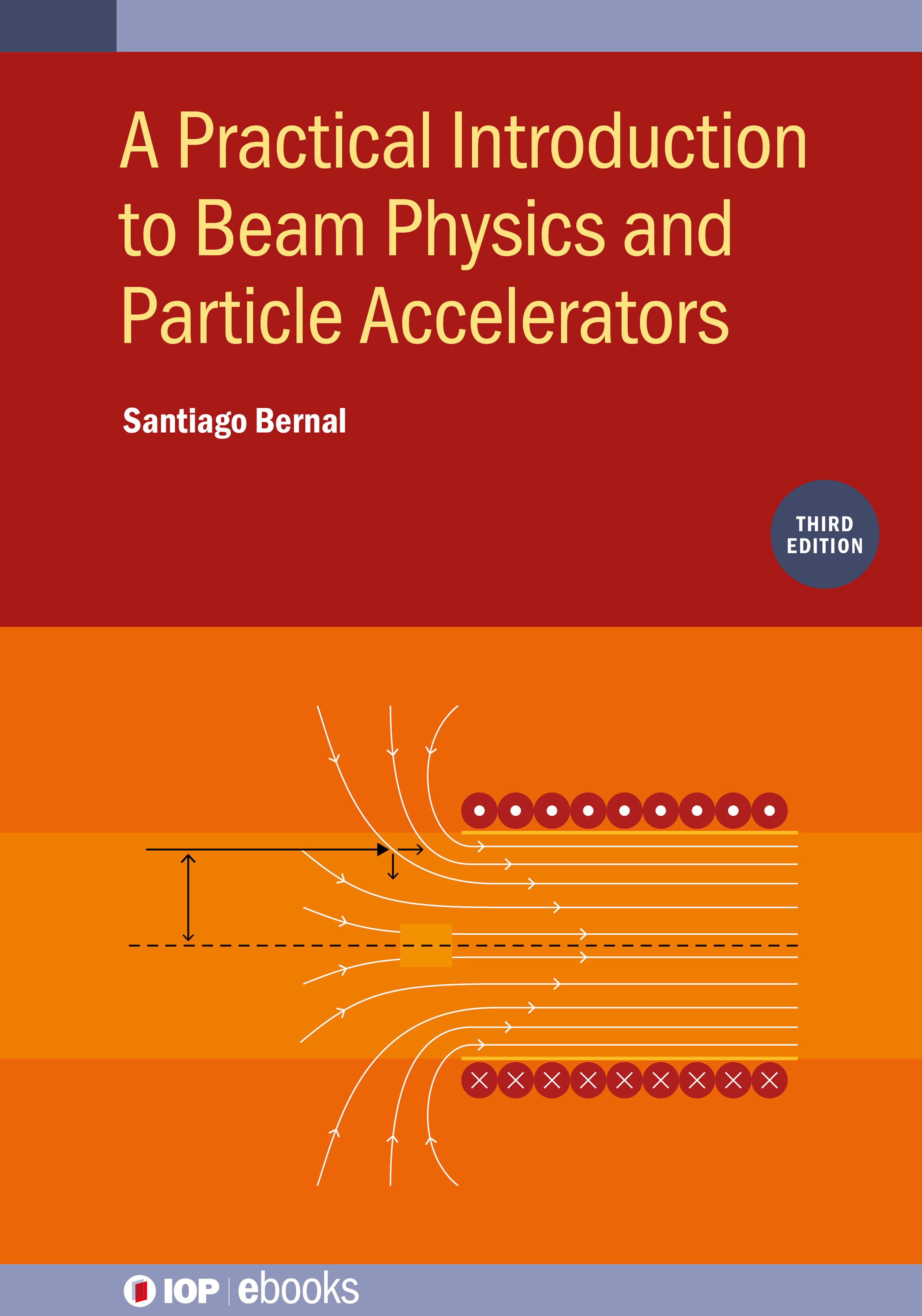 A Practical Introduction to Beam Physics and Particle Accelerators, Third Edition, by Santiago Bernal (University of Maryland), (The Institute of Physics (IOP) Publishing Ltd, 2022); doi: 10.1088/978-0-7503-4039-7.
A Practical Introduction to Beam Physics and Particle Accelerators, Third Edition, by Santiago Bernal (University of Maryland), (The Institute of Physics (IOP) Publishing Ltd, 2022); doi: 10.1088/978-0-7503-4039-7.
The third edition of this book maintains the same general character as the first two editions, which is a brief exposition with emphasis on numerical examples. However, we have expanded the discussion with new theoretical topics as well as applications. We have added two chapters (5 and 9) and an appendix B. The new chapter 5 is devoted to the beam (sigma) matrix and circular optics, major areas of accelerator theory and research. Chapter 9 is an extension of chapter 8 (which covers examples of linacs and rings, closed orbit, and beam cooling) but with examples of smaller machines, including Paul trap alternating-gradient lattice simulators. The chapter also introduces a few new concepts, such as instabilities in the isochronous regime, nonlinear integrable optics, and fixed-field alternating-gradient accelerators (FFAGs). The new appendix B, on the other hand, is a summary of accelerator magnet theory: multipole expansion, linear and nonlinear magnets, and the effective hard-edge model of focusing magnets.
Furthermore, we have revised and updated appendix A, and learned that the lifetime of working hyperlinks is shorter than we had thought. Finally, we have qualified or made corrections to a few theory statements or equations related to the Courant–Snyder theory, dispersion, and beam cooling, among others.
The examples and computer exercises comprise basic lenses and deflectors, fringe fields, lattice and beam functions, beam (sigma) matrix, circular optics, synchrotron radiation, beam envelope matching, betatron resonances, dispersion, transverse and longitudinal space charge, closed orbit, and beam cooling. Appendix A gives the reader a brief description of the computer tools employed and concise instructions for their installation and use in the most popular computer platforms (Windows, Macintosh, and Ubuntu Linux). Hyperlinks to websites containing all the relevant files are also included.
- Chapter 1: Rays, Matrices, and Transfer Maps
- Chapter 2: Linear Magnetic Lenses and Deflectors
- Chapter 3: Periodic Lattices and Functions
- Chapter 4: Emittance and Space Charge
- Chapter 5: Beam (Sigma) Matrix and Coupled Optics
- Chapter 6: Longitudinal Beam Dynamics and Radiation
- Chapter 7: Envelope Matching, Resonances, and Dispersion
- Chapter 8: Linacs and Rings (Examples), Closed Orbit, and Beam Cooling
- Chapter 9: Small Machines and Scaled Experiments
- Appendix A: Computer Resources and Their Use
- Appendix B: Accelerator Magnets
- Errata for the Third Edition
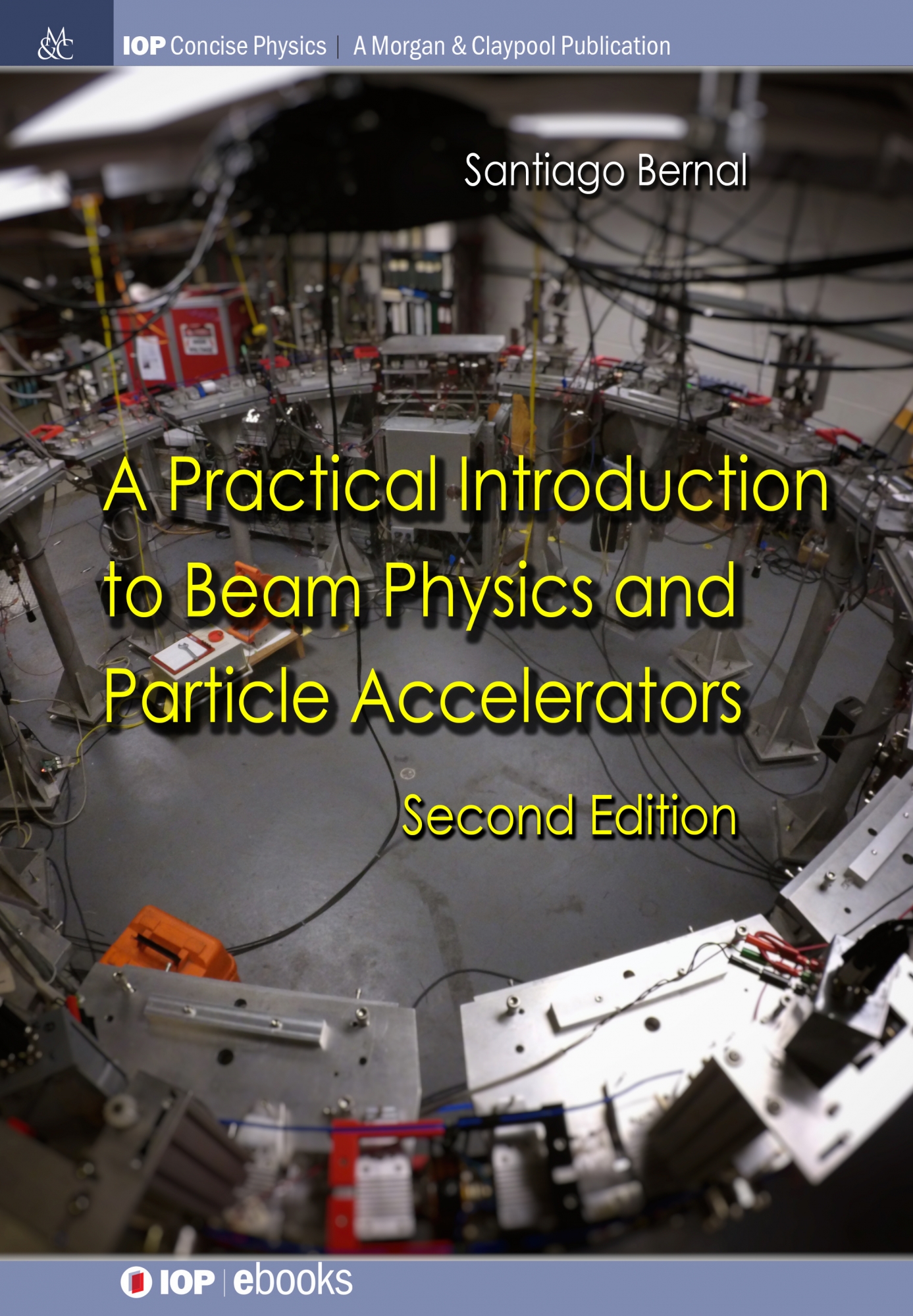 A Practical Introduction to Beam Physics and Particle Accelerators, Second Edition, by Santiago Bernal (University of Maryland), (The Institute of Physics (IOP) and Morgan and Claypool Publishers, 2018); doi: 10.1088/978-1-64327-090-6.
A Practical Introduction to Beam Physics and Particle Accelerators, Second Edition, by Santiago Bernal (University of Maryland), (The Institute of Physics (IOP) and Morgan and Claypool Publishers, 2018); doi: 10.1088/978-1-64327-090-6.
The second edition of this book maintains the same general character of the first edition as a brief exposition of the principles of beam physics and particle accelerators with emphasis on numerical examples. We have revised every section and expanded the discussion with new material and/or figures, improved notation, and new or enhanced computer resources. We have also reorganized the contents and added a few sections. The latter include material on transfer maps, thermodynamics of beams, additional aspects of envelope matching, betatron resonances and dispersion with space charge, closed orbits, and beam cooling. The appendix has been completely reorganized, revised and updated and now includes short descriptions of the map code MARYLIE, and the particle-in-cell code WARP.
The examples and computer exercises comprise basic lens and deflectors, fringe fields, lattice and beam functions, synchrotron radiation, beam envelope matching, betatron resonances, dispersion, transverse and longitudinal space charge, and closed orbits. The last chapter presents examples of two major types of particle accelerators: radio frequency linear accelerators (RF linacs) and storage rings, and sections on closed orbits and beam cooling. Lastly, the appendix gives the reader a brief description of the computer tools employed and concise instructions for their installation and use in the most popular computer platforms (Windows, Macintosh and Ubuntu Linux). Hyperlinks to websites containing all relevant files are also included. An essential component of the book is its website (actually part of the author’s website at the University of Maryland). It contains the files that reproduce results given in the text as well as additional material such as technical notes and movies. We will add new or updated material as it is developed. We have chosen Mathcad and Matlab for most examples, but we will add Python scripts in the near future.
- Chapter 1: Rays, Matrices, and Transfer Maps
- Chapter 2: Linear Magnetic Lenses and Deflectors
- Chapter 3: Periodic Lattices and Functions
- Chapter 4: Emittance and Space Charge
- Chapter 5: Longitudinal Beam Dynamics and Radiation
- Chapter 6: Envelope Matching, Resonances, and Dispersion
- Chapter 7: Linacs and Rings (Examples), Closed Orbit, and Beam Cooling
- Appendix: Computer Resources and Their Use
- Errata for Second Edition
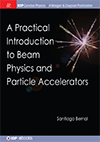 A Practical Introduction to Beam Physics and Particle Accelerators, by Santiago Bernal (University of Maryland), (The Institute of Physics (IOP) and Morgan and Claypool Publishers, 2016); doi: 10.1088/978-1-6817-4076-8. The book's goal is to teach the principles of beam physics and particle accelerators through specific examples employing readily available computer tools. These include general high-end languages such as Mathcad and MatLab, as well as more specialized particle accelerator codes (e.g., MAD, WinAgile, Elegant, and others). This approach allows the student to readily identify relevant design parameters and their scaling. In addition, the computer input files can serve as templates that can be easily adapted to other related accelerators.
A Practical Introduction to Beam Physics and Particle Accelerators, by Santiago Bernal (University of Maryland), (The Institute of Physics (IOP) and Morgan and Claypool Publishers, 2016); doi: 10.1088/978-1-6817-4076-8. The book's goal is to teach the principles of beam physics and particle accelerators through specific examples employing readily available computer tools. These include general high-end languages such as Mathcad and MatLab, as well as more specialized particle accelerator codes (e.g., MAD, WinAgile, Elegant, and others). This approach allows the student to readily identify relevant design parameters and their scaling. In addition, the computer input files can serve as templates that can be easily adapted to other related accelerators.
The examples presented comprise basic lens and deflector calculations, fringe fields, lattice and beam functions, envelope matching, and linear transverse and longitudinal space charge. The last part of the book presents examples of two major types of particle accelerators: Radio Frequency (RF) Linacs and Storage Rings. Lastly, the appendix gives the reader a brief description of the computer tools employed and concise instructions for their installation and use in the most popular computer platforms (Windows, Macintosh and Ubuntu Linux). Hyperlinks to websites containing all relevant files are also included.
- Chapter 1: Rays and Matrices
- Chapter 2: Linear Magnetic Lenses and Deflectors
- Chapter 3: Periodic Lattices and Functions
- Chapter 4: Emittance and Space Charge
- Chapter 5: Longitudinal Beam Dynamics and Radiation
- Chapter 6: Applications and Examples
- Appendix: Computer Resources and Their Use
- Errata for First Edition
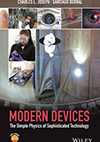 Modern Devices: The Simple Physics of Sophisticated Technology, by Charles L. Joseph (Rutgers University) and Santiago Bernal (University of Maryland), (John Wiley & Sons, 2016); ISBN: 9780470900437.
Modern Devices: The Simple Physics of Sophisticated Technology, by Charles L. Joseph (Rutgers University) and Santiago Bernal (University of Maryland), (John Wiley & Sons, 2016); ISBN: 9780470900437.
This book discusses the principles of physics through applications of state-of-the-art technologies and advanced instruments. The authors use diagrams, sketches, and graphs coupled with equations and mathematical analyses to enhance the reader's understanding of modern devices. Readers will learn to identify common underlying physical principles that govern several types of devices, while gaining an understanding of the performance trade-off imposed by the physical limitations of various processing methods. The topics discussed in the book assume readers have taken an introductory physics course, college algebra, and have a basic understanding of calculus.
COURSE MATERIAL: EE686 Material